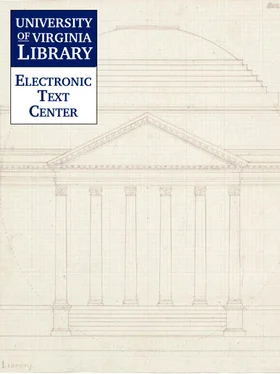Hendrik Loon - The Story of Mankind
Здесь есть возможность читать онлайн «Hendrik Loon - The Story of Mankind» весь текст электронной книги совершенно бесплатно (целиком полную версию без сокращений). В некоторых случаях можно слушать аудио, скачать через торрент в формате fb2 и присутствует краткое содержание. Год выпуска: 2000, Издательство: Electronic Text Center. University of Virginia Library., Жанр: Старинная литература, на английском языке. Описание произведения, (предисловие) а так же отзывы посетителей доступны на портале библиотеки ЛибКат.
- Название:The Story of Mankind
- Автор:
- Издательство:Electronic Text Center. University of Virginia Library.
- Жанр:
- Год:2000
- ISBN:нет данных
- Рейтинг книги:3 / 5. Голосов: 1
-
Избранное:Добавить в избранное
- Отзывы:
-
Ваша оценка:
- 60
- 1
- 2
- 3
- 4
- 5
The Story of Mankind: краткое содержание, описание и аннотация
Предлагаем к чтению аннотацию, описание, краткое содержание или предисловие (зависит от того, что написал сам автор книги «The Story of Mankind»). Если вы не нашли необходимую информацию о книге — напишите в комментариях, мы постараемся отыскать её.
The Story of Mankind — читать онлайн бесплатно полную книгу (весь текст) целиком
Ниже представлен текст книги, разбитый по страницам. Система сохранения места последней прочитанной страницы, позволяет с удобством читать онлайн бесплатно книгу «The Story of Mankind», без необходимости каждый раз заново искать на чём Вы остановились. Поставьте закладку, и сможете в любой момент перейти на страницу, на которой закончили чтение.
Интервал:
Закладка:
Originally these graves had been dug into the rocks of the western mountains but as the Egyptians moved northward they were obliged to build their cemeteries in the desert. The desert however is full of wild animals and equally wild robbers and they broke into the graves and disturbed the mummy or stole the jewelry that had been buried with the body. To prevent such unholy desecration the Egyptians used to build small mounds of stones on top of the graves. These little mounds gradually grew in size, because the rich people built higher mounds than the poor and there was a good deal of competition to see who could make the highest hill of stones. The record was made by King Khufu, whom the Greeks called Cheops and who lived thirty centuries before our era. His mound, which the Greeks called a pyramid (because the Egyptian word for high was pir-em-us) was over five hundred feet high.
It covered more than thirteen acres of desert which is three times as much space as that occupied by the church of St. Peter, the largest edifice of the Christian world.
During twenty years, over a hundred thousand men were busy carrying the necessary stones from the other side of the river--ferrying them across the Nile (how they ever managed to do this, we do not understand), dragging them in many instances a long distance across the desert and finally hoisting them into their correct position. But so well did the King's architects and engineers perform their task that the narrow passage-way which leads to the royal tomb in the heart of the stone monster has never yet been pushed out of shape by the weight of those thousands of tons of stone which press upon it from all sides.
THE STORY OF EGYPT
THE RISE AND FALL OF EGYPT
THE river Nile was a kind friend but occasionally it was a hard taskmaster. It taught the people who lived along its banks the noble art of ``team-work.'' They depended upon each other to build their irrigation trenches and keep their dikes in repair. In this way they learned how to get along with their neighbours and their mutual-benefit-association quite easily developed into an organised state.
Then one man grew more powerful than most of his neighbours and he became the leader of the community and their commander-in-chief when the envious neighbours of western Asia invaded the prosperous valley. In due course of time he became their King and ruled all the land from the Mediterranean to the mountains of the west.
But these political adventures of the old Pharaohs (the word meant ``the Man who lived in the Big House'') rarely interested the patient and toiling peasant of the grain fields. Provided he was not obliged to pay more taxes to his King than he thought just, he accepted the rule of Pharaoh as he accepted the rule of Mighty Osiris.
It was different however when a foreign invader came and robbed him of his possessions. After twenty centuries of independent life, a savage Arab tribe of shepherds, called the Hyksos, attacked Egypt and for five hundred years they were the masters of the valley of the Nile. They were highly unpopular and great hate was also felt for the Hebrews who came to the land of Goshen to find a shelter after their long wandering through the desert and who helped the foreign usurper by acting as his tax-gatherers and his civil servants.
But shortly after the year 1700 B.C. the people of Thebes began a revolution and after a long struggle the Hyksos were driven out of the country and Egypt was free once more.
A thousand years later, when Assyria conquered all of western Asia, Egypt became part of the empire of Sardanapalus. In the seventh century B.C. it became once more an independent state which obeyed the rule of a king who lived in the city of Saïs in the Delta of the Nile. But in the year 525 B.C., Cambyses, the king of the Persians, took possession of Egypt and in the fourth century B.C., when Persia was conquered by Alexander the Great, Egypt too became a Macedonian province. It regained a semblance of independence when one of Alexander's generals set himself up as king of a new Egyptian state and founded the dynasty of the Ptolemies, who resided in the newly built city of Alexandria.
Finally, in the year 89 B.C., the Romans came. The last Egyptian queen, Cleopatra, tried her best to save the country. Her beauty and charm were more dangerous to the Roman generals than half a dozen Egyptian army corps. Twice she was successful in her attacks upon the hearts of her Roman conquerors. But in the year 30 B.C., Augustus, the nephew and heir of Cæsar, landed in Alexandria. He did not share his late uncle's admiration for the lovely princess. He destroyed her armies, but spared her life that he might make her march in his triumph as part of the spoils of war. When Cleopatra heard of this plan, she killed herself by taking poison. And Egypt became a Roman province.
MESOPOTAMIA
MESOPOTAMIA--THE SECOND CENTRE OF
EASTERN CIVILISATION
I AM going to take you to the top of the highest pyramid and I am going to ask that you imagine yourself possessed of the eyes of a hawk. Way, way off, in the distance, far beyond the yellow sands of the desert, you will see something green and shimmering. It is a valley situated between two rivers. It is the Paradise of the Old Testament. It is the land of mystery and wonder which the Greeks called Mesopotamia-- the ``country between the rivers.''
The names of the two rivers are the Euphrates (which the Babylonians called the Purattu) and the Tigris (which was known as the Diklat). They begin their course amidst the snows of the mountains of Armenia where Noah's Ark found a resting place and slowly they flow through the southern plain until they reach the muddy banks of the Persian gulf. They perform a very useful service. They turn the arid regions of western Asia into a fertile garden.
The valley of the Nile had attracted people because it had offered them food upon fairly easy terms. The ``land between the rivers'' was popular for the same reason. It was a country full of promise and both the inhabitants of the northern mountains and the tribes which roamed through the southern deserts tried to claim this territory as their own and most exclusive possession. The constant rivalry between the mountaineers and the desert-nomads led to endless warfare. Only the strongest and the bravest could hope to survive and that will explain why Mesopotamia became the home of a very strong race of men who were capable of creating a civilisation which was in every respect as important as that of Egypt.
THE SUMERIANS
THE SUMERIAN NAIL WRITERS, WHOSE CLAY
TABLETS TELL US THE STORY OF ASSYRIA
AND BABYLONIA, THE GREAT SEMITIC
MELTING-POT
THE fifteenth century was an age of great discoveries. Columbus tried to find a way to the island of Kathay and stumbled upon a new and unsuspected continent. An Austrian bishop equipped an expedition which was to travel eastward and find the home of the Grand Duke of Muscovy, a voyage which led to complete failure, for Moscow was not visited by western men until a generation later. Meanwhile a certain Venetian by the name of Barbero had explored the ruins of western Asia and had brought back reports of a most curious language which he had found carved in the rocks of the temples of Shiraz and engraved upon endless pieces of baked clay.
But Europe was busy with many other things and it was not until the end of the eighteenth century that the first ``cuneiform inscriptions'' (so-called because the letters were wedge-shaped and wedge is called ``Cuneus'' in Latin) were brought to Europe by a Danish surveyor, named Niebuhr. Then it took thirty years before a patient German school- master by the name of Grotefend had deciphered the first four letters, the D, the A, the R and the SH, the name of the Persian King Darius. And another twenty years had to go by until a British officer, Henry Rawlinson, who found the famous inscription of Behistun, gave us a workable key to the nail- writing of western Asia.
Читать дальшеИнтервал:
Закладка:
Похожие книги на «The Story of Mankind»
Представляем Вашему вниманию похожие книги на «The Story of Mankind» списком для выбора. Мы отобрали схожую по названию и смыслу литературу в надежде предоставить читателям больше вариантов отыскать новые, интересные, ещё непрочитанные произведения.
Обсуждение, отзывы о книге «The Story of Mankind» и просто собственные мнения читателей. Оставьте ваши комментарии, напишите, что Вы думаете о произведении, его смысле или главных героях. Укажите что конкретно понравилось, а что нет, и почему Вы так считаете.












